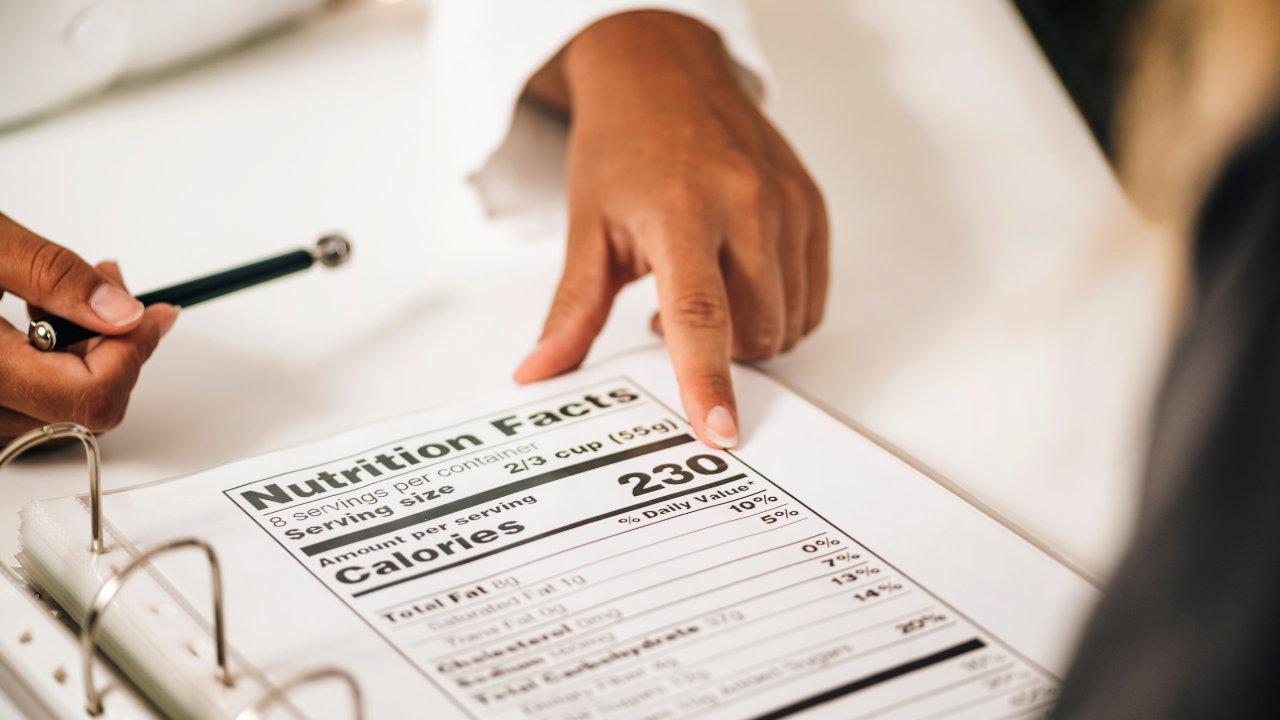The Nutrition Label: Understanding and Interpreting What it Means!

Understanding what's in the foods you buy is key for making healthier choices. However, reading a nutrition facts label can be super tricky!
Here’s a quick guide to help you understand what the information on the label actually means:
Step 1: Start with the serving size
This will tell you the size of a single serving and how many there are in a container (package). The Nutrition Facts applies to the serving size, so if the serving size is one cup and you eat two cups, you are getting twice the calories, fat and other nutrients than what is listed on the label.
Step 2: Limit certain nutrients.
Limit the amounts of added sugars, saturated fat, and sodium you eat, and avoid trans fat. By limiting these nutrients, this may help reduce your risk for chronic disease. Saturated fat and trans fat in particular are linked to an increased risk of heart disease, while high levels of sodium can cause high blood pressure. Remember that some foods like fruit contain natural sugars and total sugars can include both natural and added sugars. Aim for a low percentage Daily Value (DV) of these nutrients (added sugars, saturated fat, and trans fat).
Step 3: Get Enough Vitamins, Minerals and Dietary Fiber
Choose more foods containing dietary fiber, potassium, vitamin D, calcium and iron to maintain good health. Eating a diet high in dietary fiber can increase the frequency of bowel movements, lower blood glucose and cholesterol levels, and reduce calorie intake. Diets higher in vitamin D, calcium, iron, and potassium can reduce the risk of developing osteoporosis, anemia, and high blood pressure. Choose more fruits and vegetables to get more of these nutrients. Remember to aim for a high percentage Daily Value (DV) of these nutrients.
Step 4: Understand % Daily Value.
Use the percent Daily Values (DV) to help evaluate how a particular food fits into your daily meal plan. Percent DV are for the entire day, not just one meal or snack. Keep in mind that these are based on a 2000-calorie diet, so these percentages will not be accurate for everyone. As a general guide…
- Low is 5% or less. Aim low in saturated fat, trans fat, cholesterol and sodium.
- High is 20% or more. Aim high in vitamins, minerals and dietary fiber.
Although nutrition can seem complicated, the Nutrition Facts Label is a tool that you can use to help you better understand the nutritional value of packaged food. By using this guide, you can compare different packaged food items and pick the one to best meet your nutrition goals!


